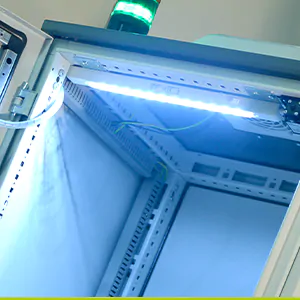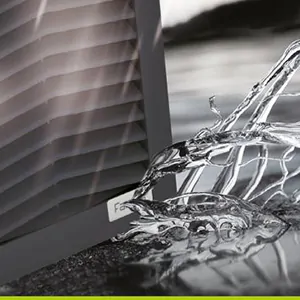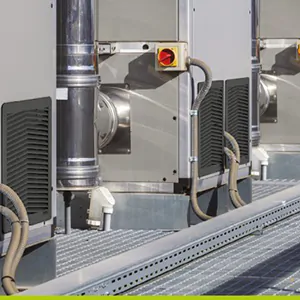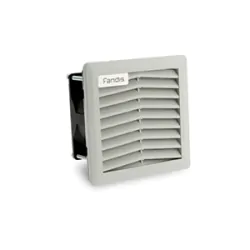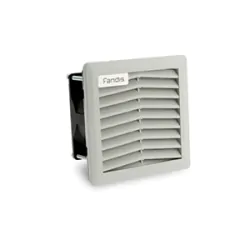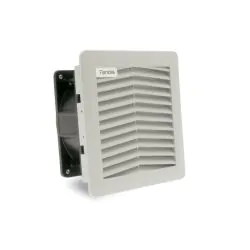Calculating Thermal Heat Dissipation
Thermal dissipation is one of the most important elements to consider before installing the cabinet itself.
What is Thermal Dissipation?
Thermal dissipation is simply heat transfer. It occurs when the heat of an object (that has a higher temperature than its surroundings) is transferred to its environment, or onto nearby colder objects. For example, heat from a radiator dissipates into a cold room and increases the temperature of the room.
The thermal dissipation of an electrical enclosure is one of the most important elements to consider before installing the cabinet itself. For this reason, it is necessary to calculate the thermal balance of the electrical cabinet to preserve the correct functioning of the equipment and to make any necessary adjustments to ensure an optimal temperature inside.
Why Calculate the Thermal Balance of an Electrical Enclosure?
The thermal balance for an electrical cabinet is the optimal condition to preserve the life of the installed components, but requires a careful evaluation of all the thermal powers acting on it: it is valid if all the total of the thermal powers sum is zero. The goal of the engineer is, therefore, to obtain the desired conditions within the electrical panel (also called “design conditions”) especially in terms of temperature.
Evaluation of the Environmental Conditions
Outdoor equipment is particularly prone to condensation given the change in temperature as daytime warmth turns to the cold of the night. Condensation may also form in indoor enclosures when humidity levels are too high and temperatures vary. It occurs when warm moist air comes into contact with cooler surfaces. This can cause electrical equipment housed within enclosures to fail prematurely.
Condensation will only form at, or close to Dew point (65% humidity), but oxidation / rusting can take place at medium levels of relative humidity at 60% depending on the type and levels of contaminants in the air /water mixture.
By keeping an enclosure at a temperature slightly higher than that of the ambient temperature, condensation can be eliminated. The warmer the air, the more water vapour it can contain. When air is cooled it can no longer hold the water vapour and reaches its dew point – this is where condensation arises.
The most effective solution to prevent condensation includes heaters, hygrostats, thermostats and pressure compensation devices. Heaters are typically applied to enclosures to ensure they stay above the minimum operating temperature and to control condensation formation.
Thermal Powers Through the Walls of an Electrical Enclosure
In summary, there is an answer to every problem of enclosure ventilation but at the extreme there is a need to utilise or combine standard products to make special solutions. For full thermal management components, see our enclosure products page. We offer filter fans, heaters, thermostats, compact fans, lights, guards and other accessories.
Thermal Heat Dissipation Formula
Qdiss=U*A*ΔT [W]
Whereby:
U [W/m2K] is the thermal transmittance of the walls of the electrical cabinet
A [m²] is the total heat exchange area
ΔT [K] is the temperature difference between the cabinet exterior and interior (Tenvironment-Tcabinet)
Heating or Cooling Requirements
In most cases, electrical enclosures need to be cooled as the equipment they house gives off heat which needs to be dissipated into the surrounding environment. In this situation, a combination of filter fans or roof fan units and exhaust inlets should be employed to extract warm air and draw in cooler air to prevent damage to the electrical equipment.
When cabinets are installed in an environment which is colder than the required internal temperature, a combination of thermostats and heaters are needed to avoid condensation. This is usually relevant when enclosures are in outdoor settings. Thermostats can control the heaters to ensure the air inside the enclosure is kept above dew point, thus, eliminating moisture. (Read our Guide to Enclosure Cooling for more information on condensation control).
Typically, the temperature of the surrounding environment changes with time of day, season and other variables. This means that the climate of the enclosure needs to be controlled with an amalgamation of the aforementioned heating and cooling solutions. This will ensure the longevity of the equipment the enclosure protects is not compromised by overheating or moisture.
For more information, read the whitepaper on Critical Elements for Correct Climate Control Design for Electrical Panels by our supplier partner, Fandis.
